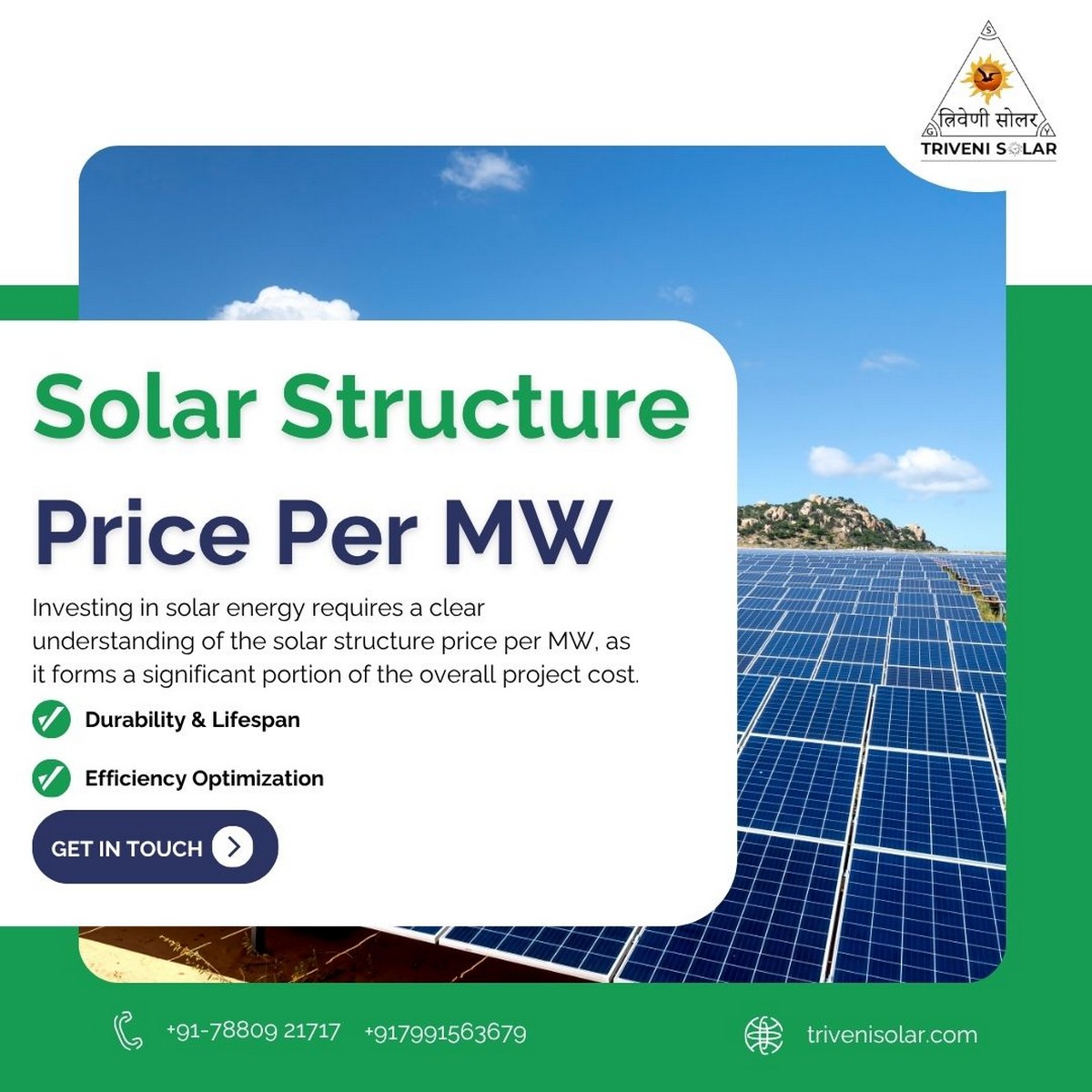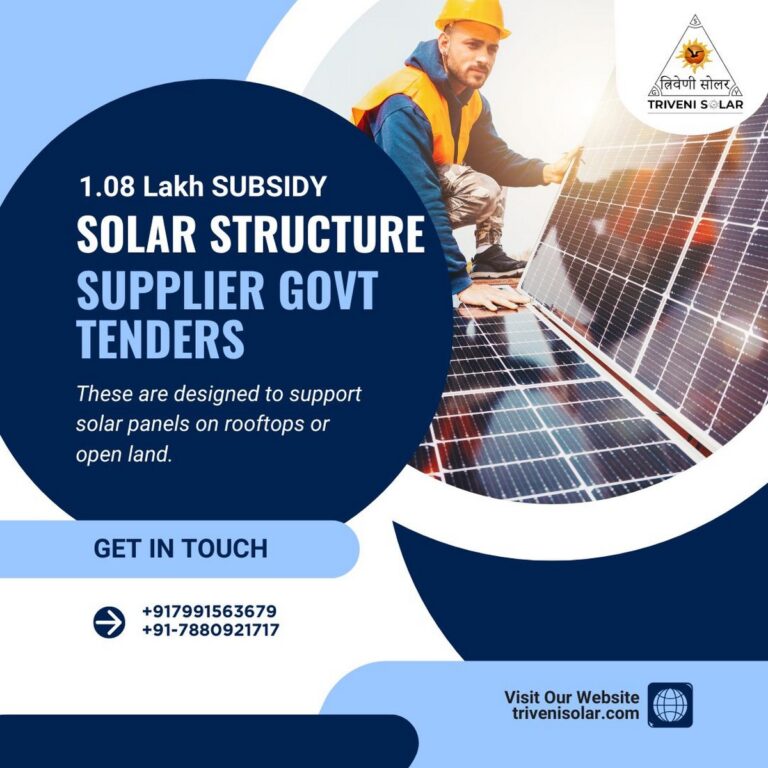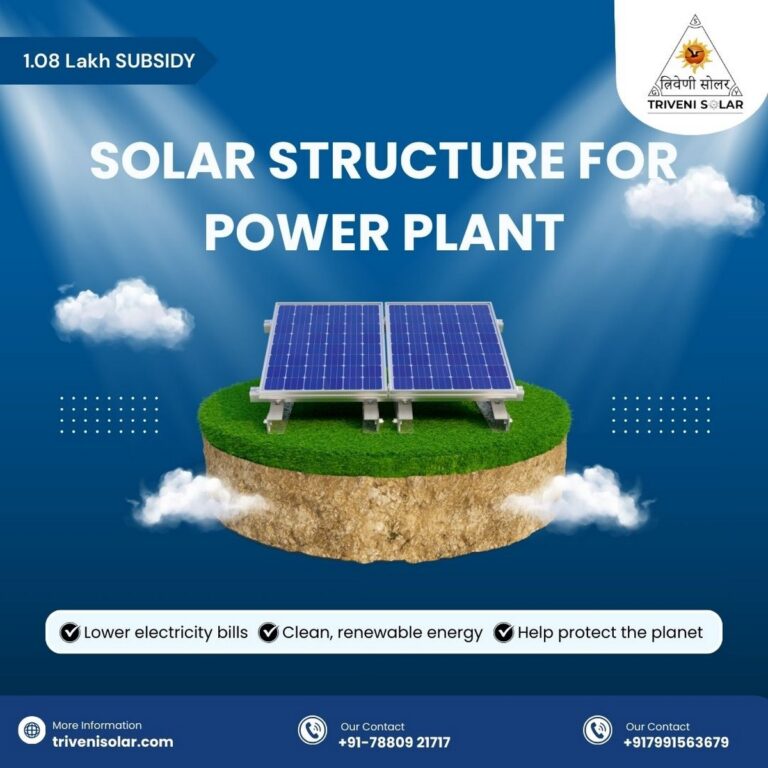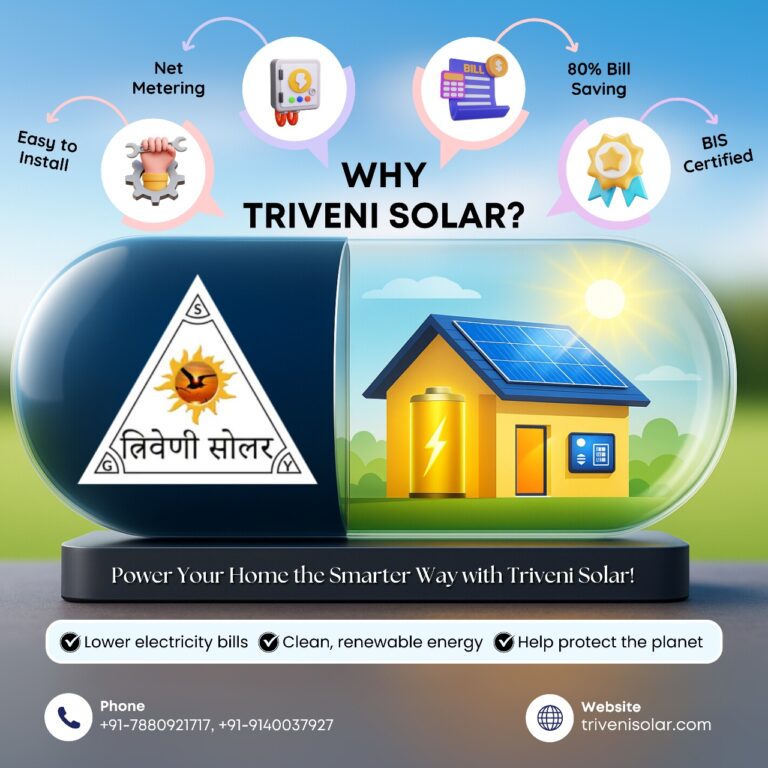The solar structure price per MW in India 2025 ranges from ₹45–55 lakhs for fixed tilt structures and ₹60–70 lakhs for tracking structures, depending on material, labor, and site conditions.
Table of Contents
- Introduction – Solar Structure Pricing Simplified
- What is a Solar Structure & Why Cost Matters
- Factors Affecting Solar Structure Price Per MW
- Types of Solar Structures & Material Costs
- Solar Structure Price Per MW in India 2025 – Detailed Table
- Comparison: Fixed Tilt vs Tracking Structures
- How to Optimize Solar Structure Costs
- Real-Life Case Study: 1 MW & 5 MW Solar Project
- FAQs – Answered for 2025 Solar Structure Costs
- Conclusion & CTA
Introduction – Solar Structure Price Simplified
Investing in solar energy requires a clear understanding of the costs involved, and solar structures form a major portion of project expenses. Knowing the solar structure price per MW helps investors, EPC companies, and project developers plan budgets accurately and achieve maximum ROI. This guide provides a complete breakdown of costs, materials, and optimization tips for 2025.
What is a Solar Structure & Why Cost Matters
A solar structure is the framework that supports solar panels. It ensures panels are stable, angled optimally for sunlight, and able to withstand environmental conditions like wind, rain, and corrosion. Structure costs significantly affect the capital expenditure (CAPEX) of a solar project, especially at the scale of 1 MW and above.
Factors Affecting Solar Structure Price Per MW
- Material Type: Mild Steel (MS), Galvanized Iron (GI), Aluminium – each with varying durability and cost.
- Design & Terrain: Hilly terrain or uneven land increases design and installation cost.
- Labor & EPC Charges: Skilled labor and EPC services directly impact total structure cost.
- Maintenance: Higher-quality materials may have higher upfront cost but lower long-term maintenance.
- Market & Inflation: Steel and aluminium price fluctuations influence per MW cost year-on-year.
Types of Solar Structures & Material Costs
Fixed Tilt Structures
Fixed tilt structures are simplest, mounted at a fixed angle to optimize solar absorption. They are cheaper and require minimal maintenance.
Tracking Structures
Tracking structures adjust the panel angle throughout the day to maximize solar yield. They are more expensive but increase energy production.
Material-wise Cost Analysis
| Material | Cost per MW (INR Lakhs) | Durability (Years) | Pros | Cons |
|---|---|---|---|---|
| Mild Steel (MS) | 45–50 | 15–20 | Affordable, widely available | Prone to corrosion, requires coating |
| Galvanized Iron (GI) | 50–55 | 20–25 | Corrosion-resistant, durable | Higher upfront cost |
| Aluminium | 55–70 | 25–30 | Lightweight, very durable, low maintenance | Expensive |
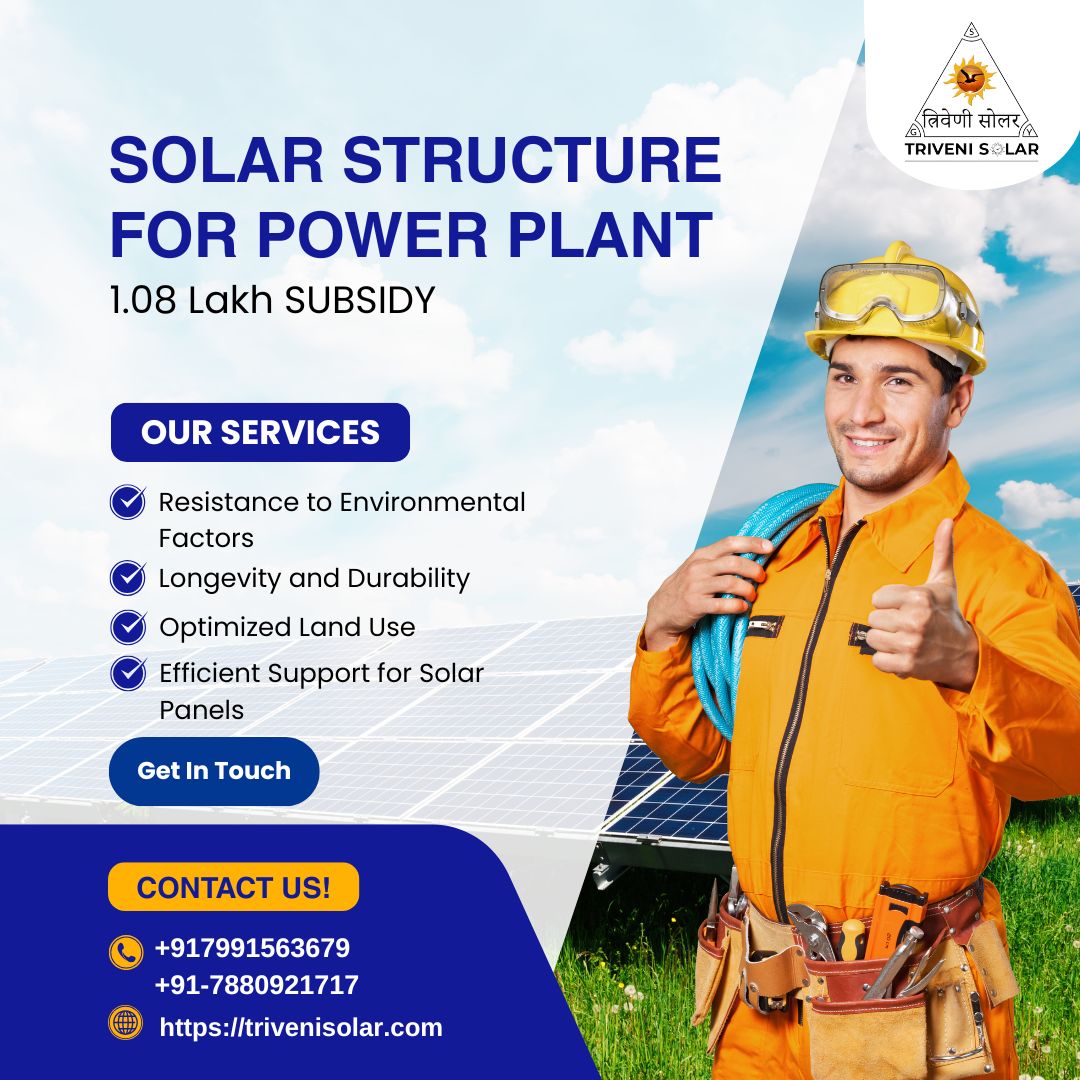
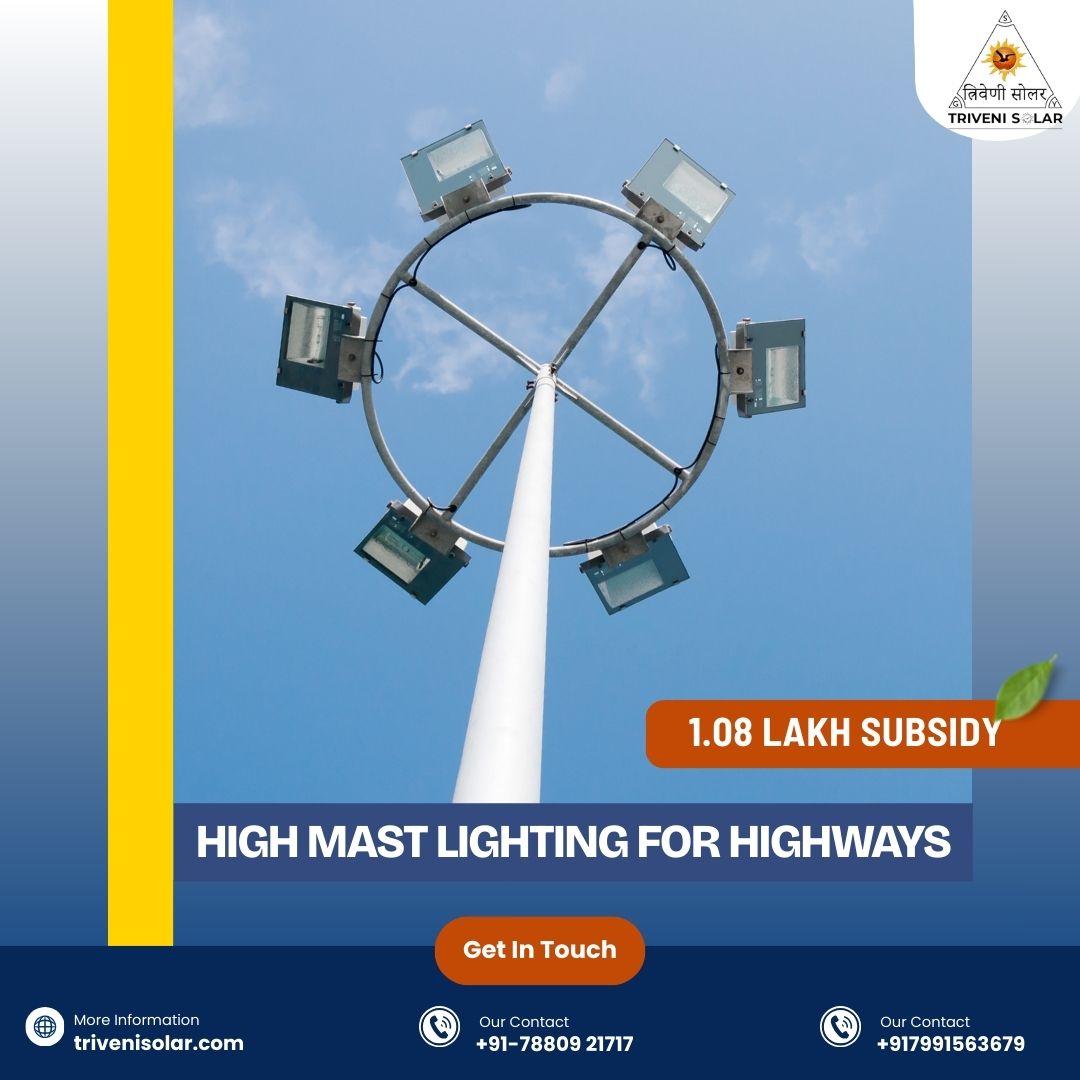
Solar Structure Price Per MW in India 2025 – Detailed Table
| MW Capacity | Fixed Tilt Structure (₹ Lakhs) | Tracking Structure (₹ Lakhs) | Material & Labor Notes |
|---|---|---|---|
| 1 MW | 45–50 | 60–65 | MS or GI preferred; labor cost moderate |
| 5 MW | 42–48 per MW | 58–63 per MW | Bulk purchase reduces material cost; GI recommended |
| 10 MW | 40–45 per MW | 55–60 per MW | Economies of scale reduce cost; Aluminium viable |
Comparison: Fixed Tilt vs Tracking Structures
| Aspect | Fixed Tilt | Tracking |
|---|---|---|
| Initial Cost | Lower | Higher |
| Maintenance | Low | Moderate to High |
| Energy Yield | Standard | 10–25% higher |
| Best For | Small-scale or budget projects | Large-scale, high-efficiency projects |
How to Optimize Solar Structure Price
- Buy materials in bulk to reduce per MW cost.
- Choose standard designs to minimize engineering expenses.
- Negotiate with EPC providers for cost-effective solutions.
- Consider long-term ROI: higher-quality materials may save money over time.
- Regular maintenance prevents structural issues and unplanned costs.
Real-Life Case Study: 1 MW & 5 MW Solar Project
Project A – 1 MW Fixed Tilt: Total structure cost: ₹47 lakhs, Material: GI, ROI achieved in 4.5 years.
Project B – 5 MW Tracking: Total structure cost: ₹60 lakhs per MW, Material: Aluminium, Energy yield +18% compared to fixed tilt, ROI achieved in 4 years due to higher efficiency.
FAQs – Answered for 2025 Solar Structure Costs
What is the solar structure price per MW in India 2025?
The average price ranges from ₹45–55 lakhs for fixed tilt structures and ₹60–70 lakhs for tracking structures, depending on material and labor costs.
How to reduce solar structure cost?
Use bulk procurement, standard designs, and negotiate with EPC providers. Choosing durable materials like GI or Aluminium can save maintenance costs long-term.
Which material is cheapest & most durable?
Mild Steel is cheapest but less durable. Galvanized Iron offers a balance of cost and durability, while Aluminium is most durable but expensive.
Conclusion
Understanding the solar structure price per MW in India is essential for accurate budgeting and ROI planning. By choosing the right material, structure type, and cost optimization strategies, investors can maximize efficiency and savings.
Ready to get your 2025 solar structure pricing & consultation? Contact Triveni Solar today and secure the best rates for your solar project!

